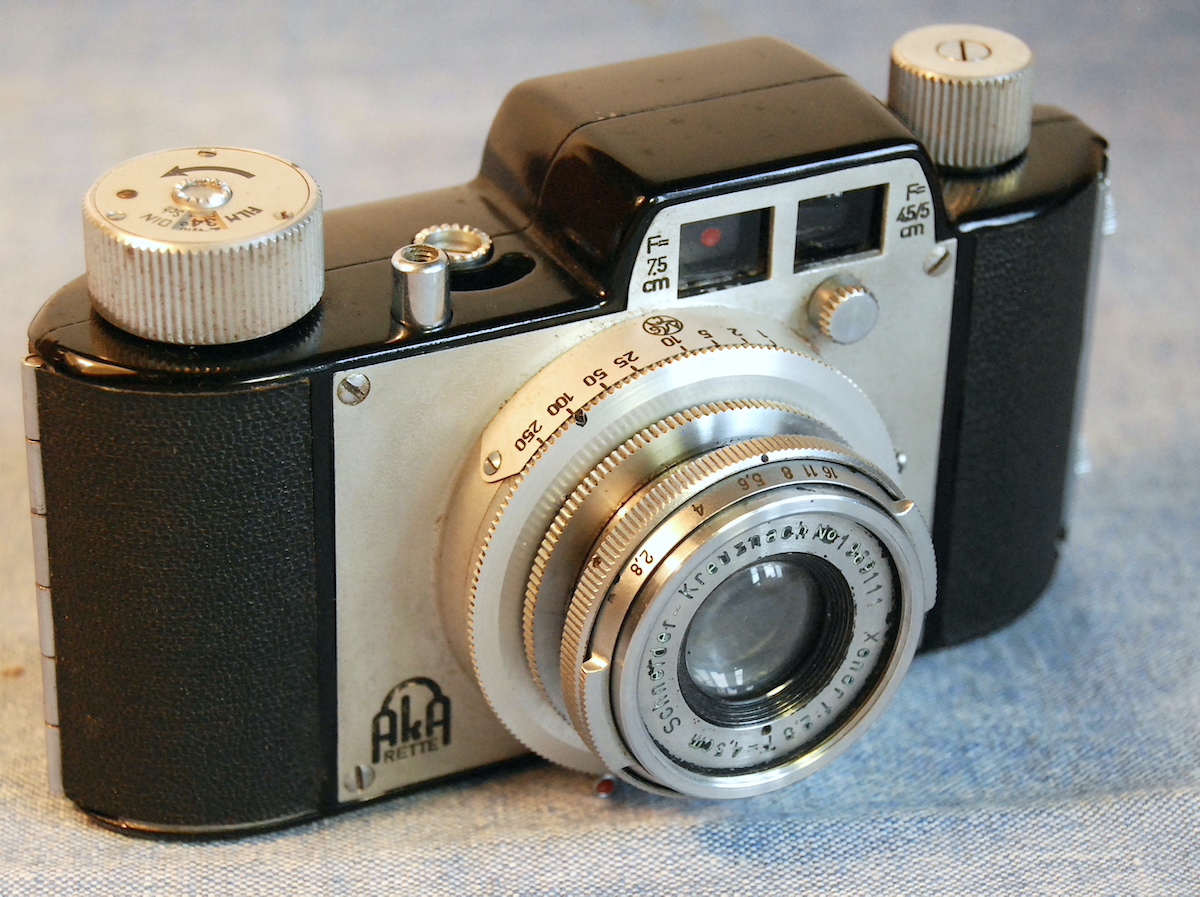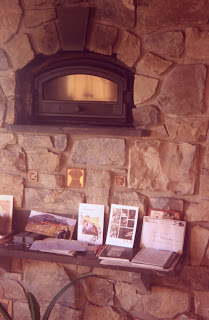 |
| My black Nikon SP with motor & battery pack |
|
|
|
Original black Nikon SPs from the late 1950s and early 60s have always been rare and today are sought by collectors. Nippon Kogaku (NK) and the American marketer, Nikon, Inc. aimed the black paint finished SPs directly at professionals, who bought them, used them hard and, in many cases, wore them out. This is an example of such a camera. Its condition and accessories are a reflection of its once use by such a working professional photographer.
The Nikon SP, was announced by Nikon, Inc. with a new price list on September 1st, 1957. This lists included the new camera in black or chrome finish and its new motor, but no price for the motor appeared. Why? Because at that date, only a few prototypes existed.
According to Rotoloni in his The Complete Nikon Rangefinder System (2008) at the time NK announced the Nikon SP, 400 cameras had already been manufactured., all part of a first run (code 26F2B-1). At least fifty of the first one hundred were in black finish. Most of these went to working professionals, many with the new motor drive—available that November as a kit for either the SP or the S2.
A black Nikon was the only way anyone initially could get a motor. Even the Nikon
Inc. price published the following May indicates that the motor was only available fitted to a black Nikon SP or black S3. Not until the 1959 price list was it possible to purchase a motor separately to go on any Nikon SP or S3.
Of the first 150 motors, we know that thirty-two got fitted to black Nikon S2s and were sold in Japan as Nikon S2Es. Their motors are the same as those sold with black SPs and their serial numbers overlap with numbers of motors found on Nikon SPs.
 |
Top of early Nikon SP
|
 |
Serial # 6200077
|
The camera:
The Nikon SP here is number 6200077, the 77th completed and in the first lot of black SPs finished (numbers 6200035-6200084). It has several of the early characteristics mentioned by Steve Gandy [https://www.cameraquest.com/nrfspv.htm], including a brighter rangefinder patch, a cast then machined-out advance lever, shallower rings on the counter cap and a black outline frame for a 35mm lens that is at least twice as thick as found on later SPs.
 |
The thick outline for 35mm lens is found on early SPs
|
 |
The cast and ground-out advance lever is found only on early SPs
|
 |
The camera as received, covered with tape
|
When I received it, the focus helicoid was rough and would hang up at 3.5 feet. Shutter speeds below 1/8 of a second all sounded like a 1/15th and T fired as B. The flash sync ring wouldn’t lift or change. Several days of exercise and a spot of lighter fluid to the helicoid and the focus works fine. All shutter speeds work except that T still thinks it is bulb every other firing. Go figure? Sync setting is now easy.
In other words, we have a camera that received heavy, heavy usage for at least half-a-dozen years, then probably sat stored for over 50 years, and yet it still works! And takes great pictures.
 |
| THe well-worn bottom of the motor back |
|
The S36 Motor:
This motor came mated to the camera and would have been sold with the camera. As noted above, as far as we can determine, all the first black Nikon SPs were only sold with motors. It is number 940062— one number earlier than the motor that came with Tad Sato’s Nikon S2E. A type one motor, it would have originally shipped with a black two-wire cord and a small battery pack that took AA batteries—the so-called “sardine pack.”.
 |
The two types of motor plugs. This motor uses the two-wire type on right.
|
The operation of the type one motors is quite different from the later types—which are three-core, three-wire and closely resemble the F36 motor for the Nikon F. A close look at the plugs for the type one (two wire) and the later three wire plugs shows one difference.
The hot wire inside pin is the same as later plugs, but the three wire metal sheath has two parts: one closes the circuit for continuous firing, the other allows single frames from a battery pack. With only a two wire connector, a remote triggering on this type one only allows continuous firing.
Single firing is also different. Set the knob on the back of the motor to the white dot and the camera fires when one uses the standard release on top of the camera. Lift the finger and the motor advances to the next frame. The dot setting is also for continuous shooting when the button set in the knob is held down.. Set the knob to K (for 継続的な [Keizoku-tekina]—the Japanese word for continuous) and the motor will fire the camera by itself until the counter winds down or the film runs out. The K setting is also for continuous shooting when the battery pack is set for remote. Note: The K mark changed to ‘C’ after about the first 200 motors.
 |
The unique battery pack
|
 |
Back of camera fitted with motor & battery pack
|
NOTE: Copies of the original instructions are downloadable from Pacific Rim Camera’s web site.
This particular motor is as worn as the camera with equal evidence of hard usage. Despite rust in spots on screws and the blade springs for the pressure plate, the interior was clean and the motor does fire from the cordless battery pack.
The Cordless battery pack:
This pack appears to have been designed specifically for this motor and is probably one-of-a-kind. No serial number or any name on it. It is similar to the Jacobson cordless packs built for the rangefinder Nikons and the Nikon Fs, but differs in many details. A front-mounted release allows remote operation in a continuous mode—or single shots if your finger is
quick enough.

|
The open battery pack before modification and after for use with 9 volt battery
|
A mini-phone jack on the side allows for remote firing via a cord with a switch. The battery pack adds only 3/8th of an inch (8mm) to the overall height. Most of the pack is in front of the motor. That part is 2.5 inches deep (65mm). The front rises 1 3/8 inches (35mm) in front, and overall width is 5.5 inches (140mm).
The wide bottom provides a stable base and the camera will not tip over. It offers two quarter-inch tripod bushes. one centered and a second to the right which appears to have never been used.
Three small screws hold its lid in place. Remove the top and there is a place for seven AA flat-top, nickel-cadmium rechargeable batteries. Seven? Yes. Flat tops yield less power than standard AAs, so seven were needed to bring the power up to the nine volts the motor needed.
The original batteries are long gone and the contacts corroded, but the combination hints at the age for the pack since Nic-cad batteries did not become readily available until 1960.
My local battery store soldered in a connector for a standard 9 volt battery and it works! But a single 9 volt battery has little humph and the motor runs slowly. I’m lucky to get two rolls of film through the motor before the voltage drops too low for the motor to complete a cycle. Oh, well. What can one expect after sixty-five years? We’re all slower than we used to be. I’m just happy it works at all.
 |
| The 21mm f4.5 Zeiss Biogon lens that came with camera |
|
The 2.1cm f4.5 Zeiss Biogon lens:
The camera came with this lens and its presence indicates what the original owner eventually used the camera for. With the cordless pack, this would have been an ideal combination for a newspaper photographer to grab “Hail Mary” shots by raising the camera high, pointing in the general direction of a speaking politician or a crowded event and pressing the release again and again. This super wide-angle would have made certain that he or she would have gotten a few usable shots in focus.
In the early 1950s, Zeiss Ikon called its great lens designer, Ludwig Bertele, back from Wild in Switzerland and commissioned him to design one last lens: the 21mm Biogon. When Zeiss brought it out in 1954, it was the widest lens for any 35mm camera anywhere in the world. The Contax version fits a Nikon rangefinder camera and even couples to the rangefinder—although why anyone would ever try to focus it is a good question since even wide open, focus is from infinity to 4.5 feet. It was the inspiration for the 21mm f4 Nikkor-O that would be NK’s widest 35mm lens for many years.
The camera’s history:
The camera and motor kit came from an ebay seller in Hillsboro, Oregon—a suburb of Portland. Other than that, we have not been able to discover its history.
 |
Number 063 on interior of faceplate is either evidence of a past repair or a company production number
|
The west coast of the United States was a leader in the use of Japanese cameras in America and it is possible—even likely—that this combo was purchased for a staff photographer working for either the Portland Oregonian or Portland Journal—Portland’s two daily newspapers—in late 1957 or early 1958, or as soon as that camera-motor combination became available. The Portland Journal would die in the 1960s after a long, bitter labor strike, and if that is where the camera was owned, its use might have died with the newspaper. This may be one of the first Nikon SPs sold in Oregon. If anyone has any ideas as to who its owner might have been, I would certainly welcome that information.
Whoever owned the camera must have grown concerned over the brassing of the black paint because at some point he or she carefully covered all the exposed edges and much of the camera surface with 3M’s “decorate and repair” tape. This type of tape can do an excellent job of protecting metal and painted surfaces provided it is not left on too long. I have used this kind of tape on other cameras in the past and it works well, but left to cold, dampness or heat, the adhesive can harden, making removal without damaging the paint underneath almost impossible. On this camera, the tape had become ugly and was peeling in places. Careful removal resulted in some loss of paint, including most of the serial number (no, I’m not the one who did that peeling). However, the number is still readable under magnification.
 |
Dead hemlock taken with 21mm Biogon
|
 |
Camera set up for use. Handles nicely.
|
 |
| House taken with 21mm Biogon |
|




















































